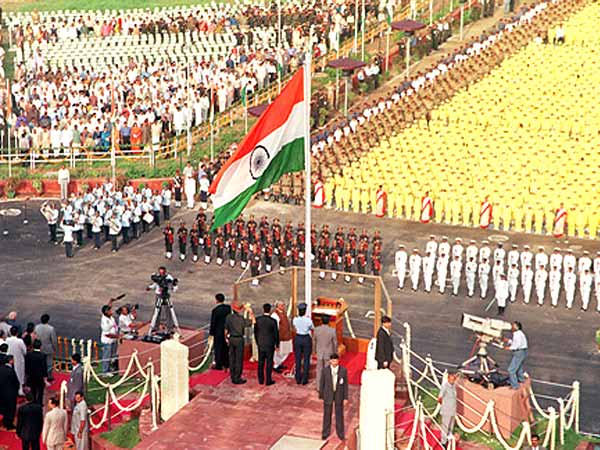Indian Independence Day celebrations comprise of great fanfare gaiety. Read all about celebrating Independence Day in India.
Independence Day Celebrations

|
August 15, the Independence Day of India, is celebrated with great gusto. It is also a national holiday, with educational institutions, private and government organizations remaining closed, but opened for official celebrations in the morning. It is a time to contemplate what we have achieved by freedom and how we achieved it. Though India had no dearth of religious and community festivals, there was, until Independence, no true national festival that the whole country could partake of. Independence Day, beginning as a day to commemorate the greatest moment in Indian history, has now come to signify a feeling of nationalism, solidarity and celebration. Read all about the celebrations of the Independence Day of India, in the following lines.
Independence Day Celebrations in India
Schools and colleges mark the celebrations of Independence Day with cultural activities, drills, flag hoisting and distribution of sweets. A number of Government as well as private organizations celebrate it in the similar manner, although most of them remain closed for the entire day. Families and friends get together for lunch or dinner, or go for an outing. Housing colonies, cultural centers, clubs and societies hold entertainment programs and competitions, usually based on the freedom theme.
The Prime Minister of India sets the mood for Independence Day, by hoisting the national flag and addressing the nation from the Red Fort, the historical monument in Delhi, in the morning of the day. This is followed by a march-past of the armed and police forces. The Prime Minister's address and the march-past following it are relayed live on national television of India - Doordarshan. Similar ceremonies are held in all the state capitals as well. Many schools organize march-past and call upon prominent politicians of their respective constituencies, to witness the event.
In the Indian cities, one could see a sudden burst of saffron, green and white colors, which represent the Indian tri-color. The media, especially private radio channels, go to town with a variety of contests, promotions and programs related to Indian independence. Television channels show patriotic movies and relentlessly play patriotic songs from old and new movies. Billboards on roadsides for different brands pay their tribute to the nation. The sky wears a bright spectrum of colors, when beautiful kites of various shapes, sizes and color are flown in the evening of Independence Day.
Everyone seems to have something going for him or her. Shops sell a range of Independence Day merchandise such as flags, stickers, tee-shirts and greeting cards. People hawk paper and plastic flags and tri-colored balloons to motorists at traffic signals. Although the day is an amalgamation of the trifle of commercialization and jingoism, what lies beneath all the colorful celebrations is the national spirit of gaiety, pride and hope for a better future. A spirit and hope that is renewed every year by Indians, on August 15.




